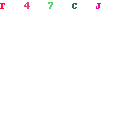Minerals and Gem Stones
The Little Stone that Could – What Makes a Mineral a Gem Stone?
Historically, stones have been classified as gems by collectors rather than scientists. Therefore, the types of substances that are called gem stones are many and varied and not agreed upon by all.
Among the mineral based gem stones, however, we find some consistency of opinion:

First, what is a mineral gem stone?
To be classified as a true mineral, a substance must be:
- Solid. (Mercury, though very shiny, need not apply.)
- Crystalline. This applies to the mineral gem stone diamond, the hardest of all natural substances, as well as the mineral graphite, one of the softest. Both are made of carbon crystals.
- Inorganic. Even though the diamond is made of carbon, the basis for most organic compounds, it does not originate from once living material.
- Homogeneous. The substance must be made up of a single element, like the carbon based diamond, or a single chemical compound, like the aluminum oxide based sapphire.
- Naturally Occurring. A substance must be formed in the earth over time and extracted before it can be considered a mineral or a mineral gem stone. Though many gem stones have been fabricated in the lab with composition identical to their mineral gem stone models, they are not considered minerals.
Mineral Gem Stone – Diamond:
Always at the top of any list of gem stones. Crystalline, pure carbon, and the hardest substance in nature, this gem is the perfect example of what a mineral needs to be.
Mineral Gem Stone – Emerald:
This typically clear mineral green stone is a compound of the metallic elements beryllium and aluminum, with the non metallic element silicon.
Pound for pound (or carat for carat) it is the most valuable mineral gem stone in the world.
Mineral Gem Stone – Moonstone:
A milky white or bluish white stone belonging to the mineral family feldspar. Feldspars are common rock forming minerals that make up a large portion of the earth's crust.
Mineral Gem Stone – Garnet:
This is a very ambitious little mineral which can contain a wide variety of elements in its chemical formula, including calcium, aluminum, manganese, and two isotopes of iron.
Mineral Gem Stone – Amethyst:
This is made from a silicon compound and is a type of quartz, which is the most abundant mineral on earth.
The yellowish 'burnt amethyst' is created by heat treating, this usually purple colored stone. This process will create a gem very similar to the more valuable citrine.
When a gem is like a mineral but not quite.
Several well known gem stones have many, but not all of qualities of a mineral.
Obsidian, also called volcanic glass, is solid, homogeneous, and inorganic, but does not have a crystalline structure.
The lapis lazuli, though perhaps the first stone to be called a gem, is actually classed as a rock. While solid and inorganic, it is made up of a mixture of true minerals.